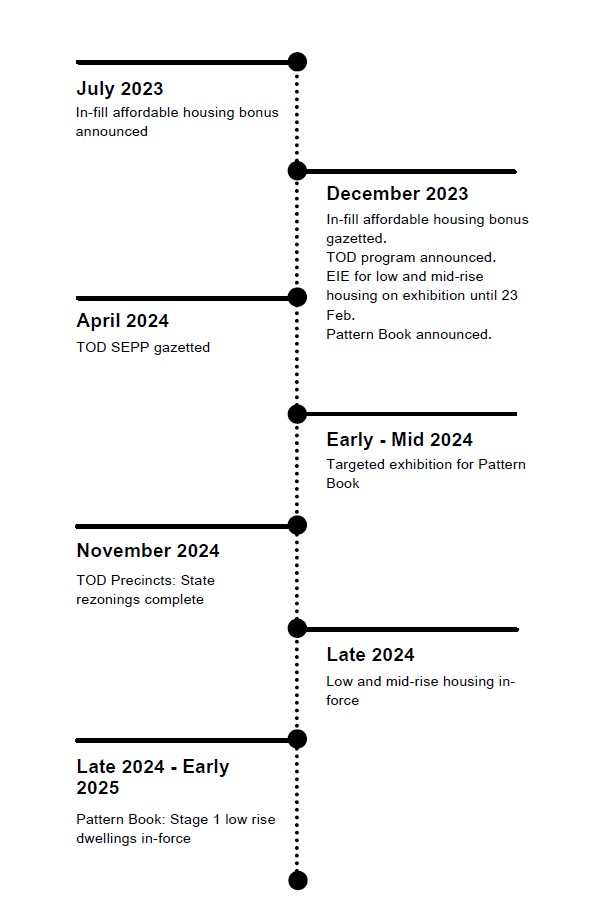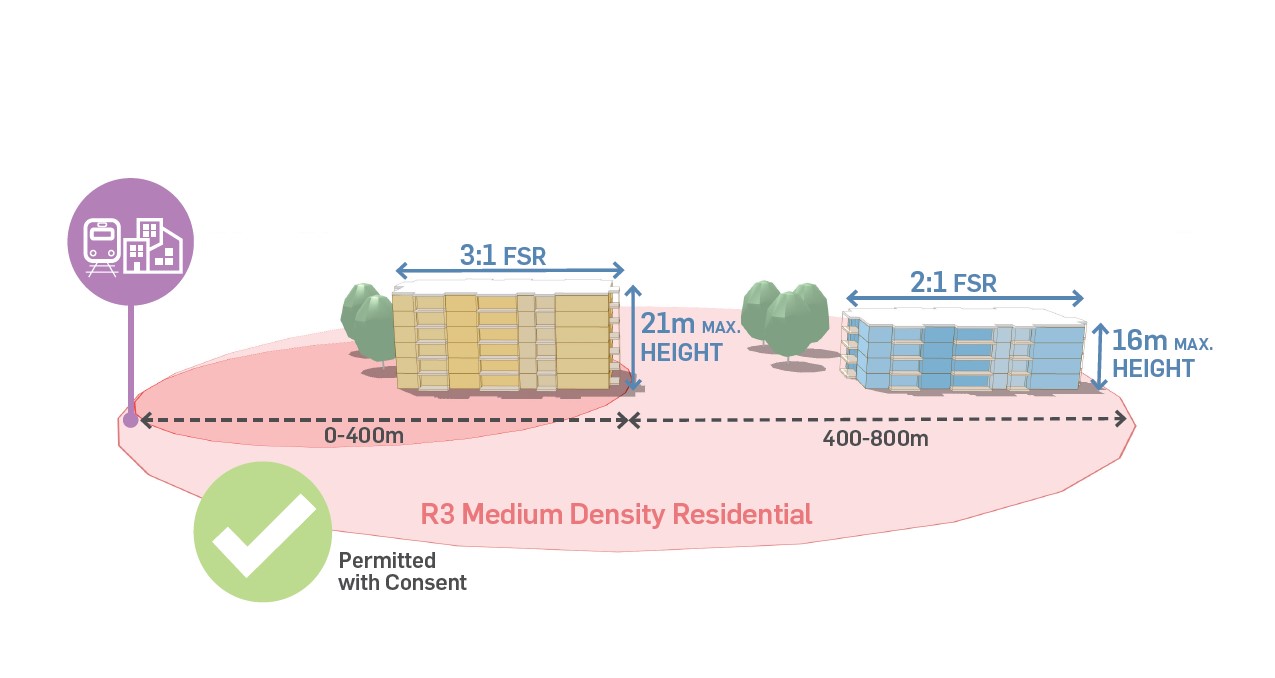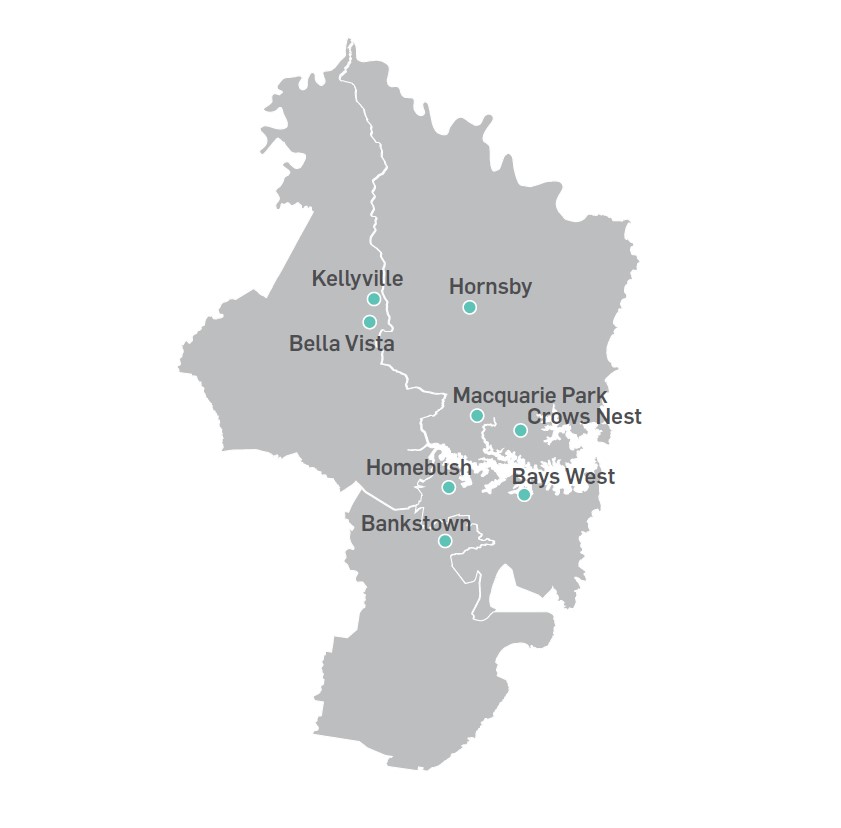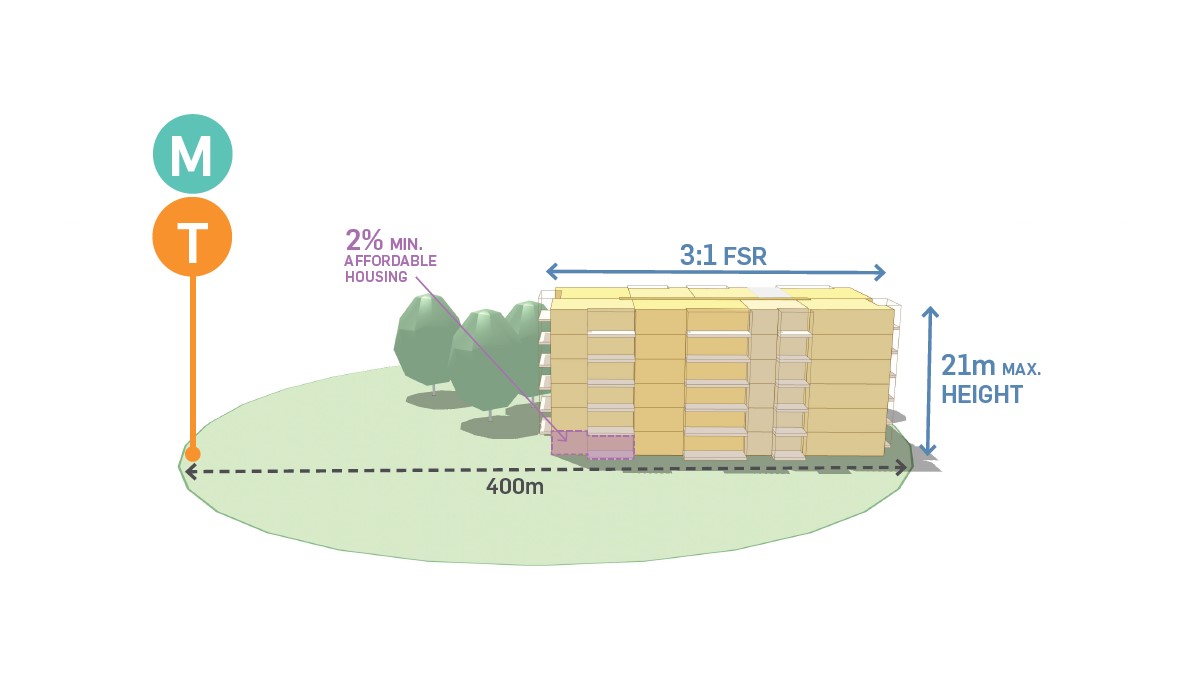After decades of limited planning reform success, the Albanese Government’s housing reform agenda may break the trend. How? With a range of attractive financial incentive measures to support the aspired delivery of 1.2 million well-located homes across Australia.
As part of the National Housing Accord and backed by Federal Government funding, the NSW Government has committed to delivering 75,000 dwellings per annum over 5 years. This is a 36% increase from the 48,000 dwellings delivered in 2022 and a target which NSW is already failing to deliver.
To help achieve this lofty – and necessary – goal, the NSW Government is moving away from a single policy solution. In a once in a generation policy movement, all levers are being pulled and a suite of changes are being implemented in the hope that something will work.
We applaud the NSW Government for making every effort to deliver a diverse range of housing types. We are seeing a greater focus on implementation, different assessment pathways, reduced assessment timeframes and a commitment to delivery, with a shared obligation between Government and developers.
But is this multi-layered reform just creating a tangled web of housing policy?
Since December 2023, four distinct policies have been announced, exhibited or enacted. Everyone from the community, developers, planners and assessing officers appear to be scrambling to decipher what this means and how it applies.







